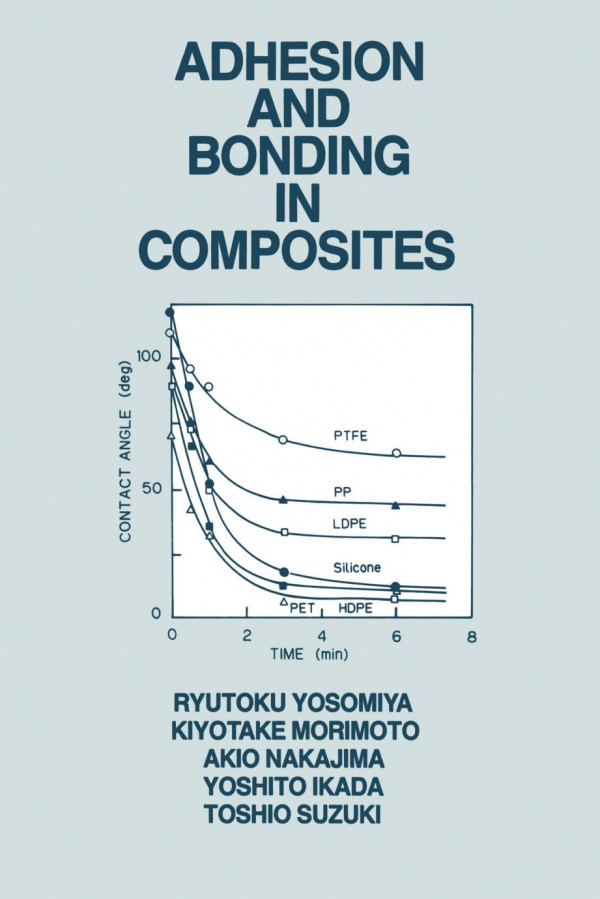

Most ebook files are in PDF format, so you can easily read them using various software such as Foxit Reader or directly on the Google Chrome browser.
Some ebook files are released by publishers in other formats such as .awz, .mobi, .epub, .fb2, etc. You may need to install specific software to read these formats on mobile/PC, such as Calibre.
Please read the tutorial at this link: https://ebookbell.com/faq
We offer FREE conversion to the popular formats you request; however, this may take some time. Therefore, right after payment, please email us, and we will try to provide the service as quickly as possible.
For some exceptional file formats or broken links (if any), please refrain from opening any disputes. Instead, email us first, and we will try to assist within a maximum of 6 hours.
EbookBell Team

4.3
98 reviews
ISBN 10: 082478149X
ISBN 13: 9780824781491
Author: Ryutoku Yosomiya
This book deals with the roles played by the component material interface in composites, with special emphasis on methods used to improve the adhesion and bonding between them. It is helpful for scientists and engineers in the materials field and to engineers working with adhesives or composites.
1. Interfacial Characteristics of Composite Materials
Introduction
Composite Effect and Interfaces
Structure and Function of Interfaces
2. Wettability and Adhesion
Introduction
Wettability and Adhesion Force
Interaction Force at Interface and Peeling Strength
Surface Chemical Change of the Adhered Surface and Its Adhesiveness
3. Surface Modification of Matrix Polymer for Adhesion
Introduction
Complexities of Adhesive Strength
Chemical Treatment of Polymers to Improve Wettability
Modification by Corona Discharge Treatment
Modification by Ultraviolet Irradiation
Modification by Plasma Treatment
4. Surface Modification of Matrix Polymer by Craft Polymerization and Its Effect on Adhesion
Introduction
Plasma Treatment Polymerization
Radiation Polymerization
Photografting Polymerization
5. Modification of Inorganic Fillers for Composite Materials
Introduction
Surface Improvement by Coupling Agents
Functional Groups on Inorganic Filler Surface
Polymerization onto Inorganic Filler Surface
Surface Modification of Inorganic Fibers
6. Surface Modification and Adhesion Improvement by the Blend Method
Introduction
Surface Modifications by Polymer Blend
Adhesion Improvement by Triazine Thiols Blend
7. Adhesion of Resin to Metal
Introduction
Adhesion of Plastics to Metal
Adhesion of Elastomer to Metal
Modifications of Metal Surface by Triazine Thiols
8. Bonding of Ceramic to Metal
Introduction
Methods and Basis of Bonding Process
Examples of Bonding Process
9. Interfacial Modifications and Bonding of Fiber-Reinforced Metal Composite Material
Introduction
Carbon-Fiber-Reinforced Metal Composites
Silicon Carbide-Fiber-Reinforced Metal Composites
Boron-Fiber-Reinforced Metal Composites
Alumina (Al2O3)-Fiber-Reinforced Metal Composites
Metallic-Fiber-Reinforced Metal Composites
10. Interfacial Effect of Carbon-Fiber-Reinforced Composite Material
Introduction
Surface Treatment of Carbon Fiber
Roles of Interface in Mechanical Properties of Composites
Roles of Interface in Physical Properties of Laminate CFRP
11. Interface Analyses of Composite Materials
Introduction
Analyses of the Surface and the Interface of Matrix
Analyses of the Surface and the Interface of Filler
Analyses of the Interface between Filler and Matrix
12. Interfacial Strength of Composite Materials
Introduction
Basic Strength of Fiber-Reinforced Composites
Measurements of Interfacial Strength
Index
composite adhesive bonding
adhesion joint
types of bonding at the interfaces of composites
types of bonding at the interface in composite materials
3m composite and metal bonding adhesive
secondary bonding composites
Tags: Ryutoku Yosomiya, Adhesion, bonding